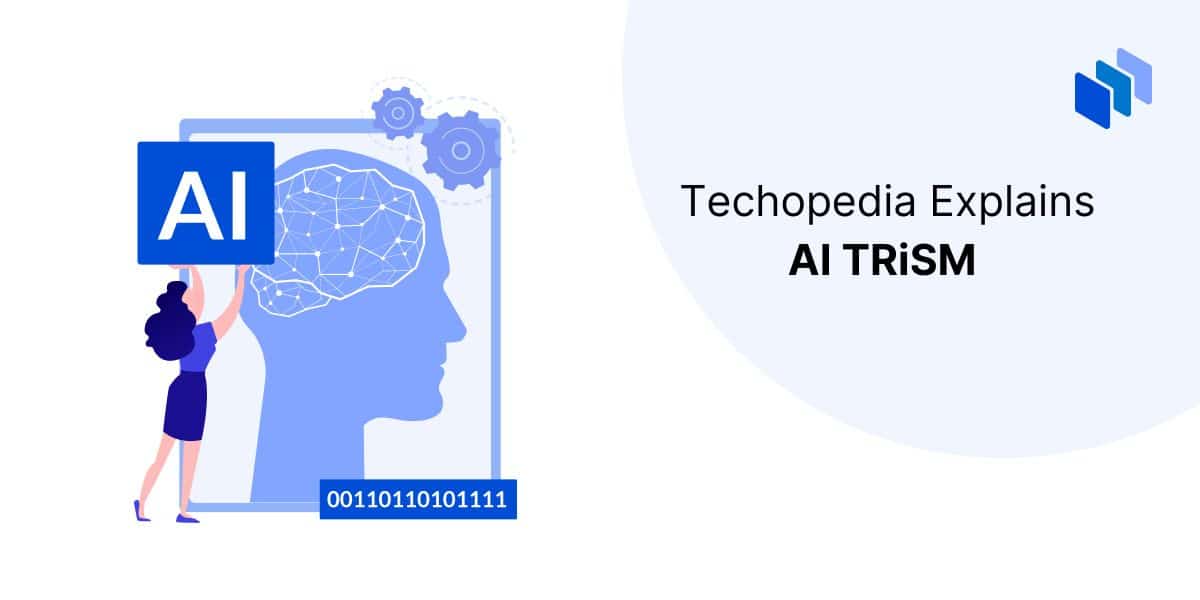What is AI TRiSM?
AI TRiSM (Trust, Risk, and Security Management) is a market segment for AI governance products and services. Products and services that fall under the AI TRiSM umbrella include AI auditing and monitoring tools, as well as governance frameworks that include transparency, data management, and security requirements.
The global market for AI TRiSM solutions is expected to reach $7.74 billion by the end of 2032, according to market research reports from Gartner, Emergen Research, and Allied Market Research.
Techopedia Explains
The rapid growth of the AI TRiSM market is attributed to several factors, including:
- Increased AI adoption
It’s estimated that nearly half of all businesses are using artificial intelligence (AI) to improve operational efficiency and gain competitive advantages. The increasing availability of third-party generative AI applications and application program interfaces (APIs) has lowered the bar for entry to AI and is creating the need for new types of governance tools and security management frameworks.
- Growing awareness of AI risks
As AI use becomes more commonplace and integral to operations, organizations are becoming increasingly aware of the potential financial and reputational risks associated with using the technology. This awareness is driving the demand for companies to incorporate AI governance into their broader risk management and compliance strategies.
- The need for trustworthy AI
Widespread AI adoption in high-stakes domains like healthcare and finance requires confidence in an AI system’s decision-making processes. Explainable, transparent AI models make it easier to determine accountability when AI-driven decisions lead to unintended consequences, ethical dilemmas, or legal issues.
- Evolving regulatory landscape
TRiSM solutions are frequently marketed as tools that make it easier to meet Responsible AI benchmarks and comply with evolving regulatory standards concerning fairness, privacy, and data security.
- New types of security risks
Some of the most popular TRiSM tools include security features designed to make AI models less susceptible to AI-focused security exploits such as model poisoning.
Benefits of AI TRiSM
TRiSM products, services, and frameworks are becoming essential tools for establishing and maintaining the responsible use of AI.
They can help users and stakeholders trust the way an organization is using AI by verifying AI decisions and facilitating early identification and mitigation of issues related to data privacy, and algorithmic bias. On the security front, AI model governance can help safeguard infrastructure, preserve data integrity, and help prevent AI from becoming an attack vector.
Perhaps the biggest benefit, however, is the way TRiSM tools can help organizations deal more effectively with evolving AI regulations and best practices and foster trust in AI model decisions.
AI TRiSM Tools
As a market segment, AI TRiSM includes products and services for risk management, modelOps, data, and content anomaly detection, and data privacy assurances.
Currently, no single platform or vendor covers all segments and aspects of the AI TRiSM market. Typically, organizations rely on a number of products and services from different vendors to meet specific AI TRiSM needs. This is partly due to the fact that AI TRiSM is interdisciplinary and requires specialized knowledge in multiple knowledge fields, including regulatory compliance, cybersecurity, data science, and AI ethics.
As the market continues to grow, vendors and service providers are expected to bundle TRiSM tools for specific industries to provide tailored solutions that address the unique trust, risk, and security challenges of each sector.
AI TRiSM Frameworks
Trust, Risk, and Security Management frameworks can be thought of as blueprints or guidelines that organizations can use to identify, assess, and mitigate the risks associated with acquiring, developing, and deploying artificial intelligence systems. Popular TRiSM frameworks include:
| TRiSM framework | Description |
| Gartner Trust, Risk and Security Management (TRiSM) | This framework is a comprehensive approach to managing trust, risk, and security in AI systems. Gartner’s TRiSM framework provides a set of guidelines and best practices that organizations can adopt to ensure the AI systems they use are ethical, fair, reliable, and secure. |
| National Institute of Standards and Technology (NIST) AI Risk Management Framework | This framework includes strategies for identifying, assessing, and mitigating the risks associated with AI systems. It covers a wide range of topics, including data privacy, security, and bias. |
| Microsoft Responsible AI Framework | This framework provides guidance for how to develop and deploy AI systems that are ethical, fair, and accountable. It covers a wide range of topics, including bias, fairness, transparency, and privacy. |
| Google AI Principles | These guidelines for AI development and deployment emphasize the importance of fairness, privacy, and security in AI systems. |
| World Economic Forum (WEF) Principles of Responsible AI | This framework includes recommendations for how to acquire AI systems that are ethical, fair, and accountable. The guidelines were developed by a group of international experts and cover a wide range of topics, including bias, fairness, transparency, privacy, and security. |






